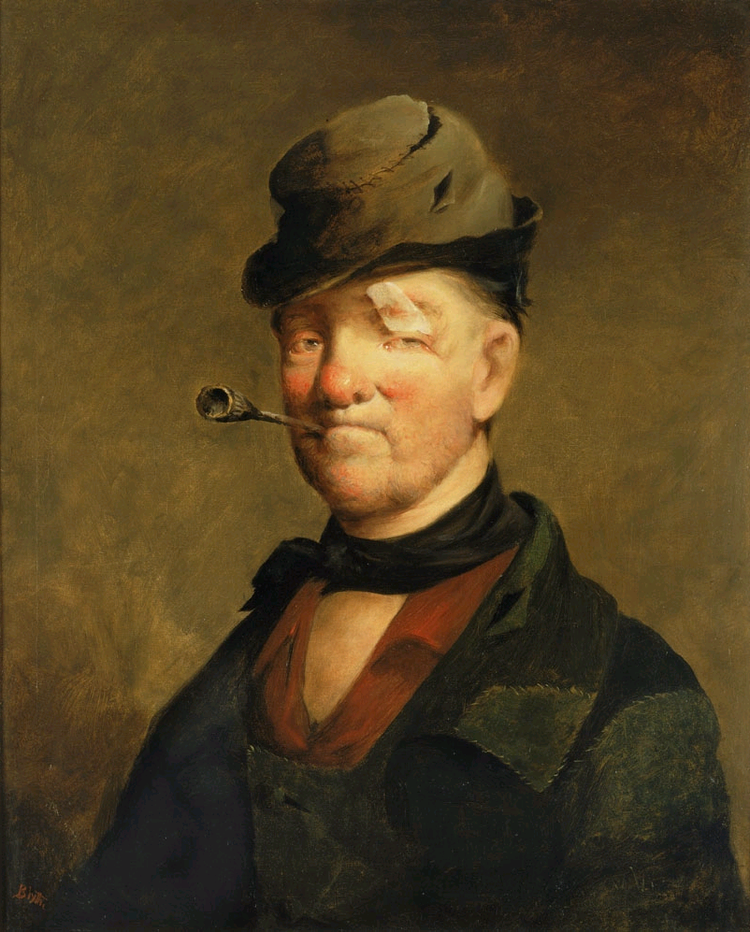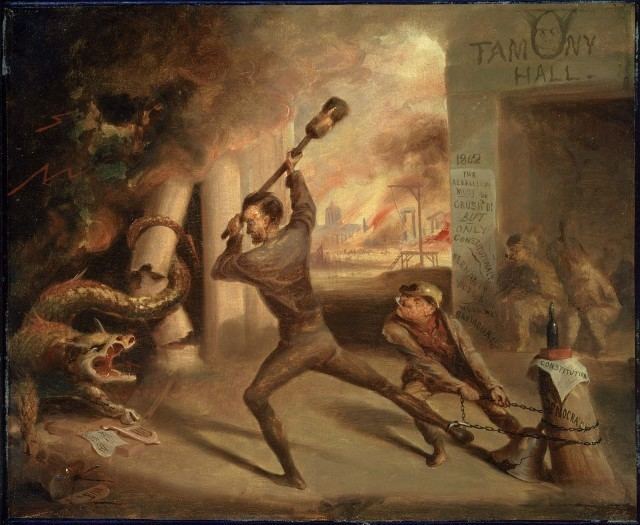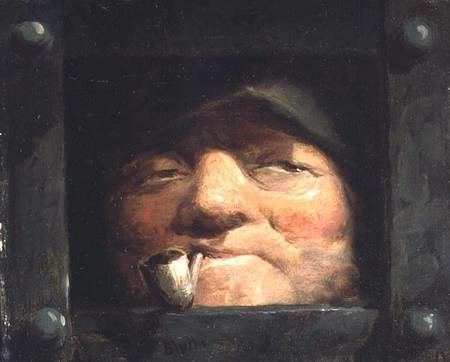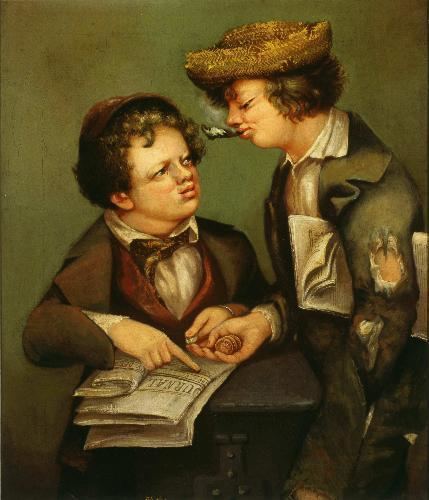Name David Blythe | Role Artist | |
 | ||
Died May 15, 1865, Pittsburgh, Pennsylvania, United States Artwork In the Pittsburgh Post Office, Old Virginia Home | ||
Blythe, Justice (reposted with minor correction)
David Gilmour Blythe (May 9, 1815 – May 15, 1865) was a self-taught American artist best known for paintings which satirically portrayed political and social situations.
Contents
- Blythe Justice reposted with minor correction
- Early years
- Adulthood
- Civil War
- Later work
- Reputation
- References

Early years

Blythe was born in East Liverpool, Ohio on May 9, 1815 to poor parents of Scottish and Irish ancestry. After a childhood in a log cabin by the Ohio River, at the age of 16, Blythe moved to Pittsburgh, Pennsylvania. There he apprenticed himself to woodcarver Joseph Woodwell. In his subsequent work as an itinerant portrait painter, Blythe traveled widely from Baltimore to Philadelphia and perhaps as far as New Orleans. Other than his stint with Woodwell, Blythe had no known artistic education or training.
Adulthood

In addition to painting, Blythe carved from poplar a large (8'2") statue of Lafayette for the Uniontown, Pennsylvania courthouse. He also invested a great deal of time and energy painting a panorama — an early forerunner to motion pictures.

His social awkwardness and general bellicosity were intensified when Blythe drank, which was often. After another statue project in nearby Green County fell through, the Uniontown newspapers published Blythe poems in which he referred to Greene County as "a sow grown fat with buttermilk and meal." A Greene County newspaper then published a retort by a local poet in which Blythe was named too much of a drunk to be worth anyone's attention. Blythe's impudent response was a letter in which he called the poet "the son of an insolvent rat."
Between 1850 and 1852, Blythe suffered several profound losses. Both his father and his wife, the former Julia Ann Keffer, died. His panorama venture failed financially. After these tribulations, his work became increasingly and bitingly satirical. He turned away from portraiture and instead concentrated on canvases depicting hot-button social and political issues. He opposed the expansion of both slavery and immigration and made visual points regarding both issues in a number of paintings.
Civil War
Blythe painted "Lincoln Crushing the Dragon of Rebellion" in 1862. This piece depicts a fiery Abraham Lincoln in the center of the canvas, straining forward to crush rebellion (depicted as an alligator or crocodile) while in the background, a huge fire rages.
Blythe did not serve in the military during the Civil War. He did follow a regiment in hopes of making sketches to use later as studies for paintings of battle. Although Blythe did not personally witness combat, he gained enough of a sense of the cruelties of war that he was emboldened to paint several powerful pieces. Of these, the most famous is "Libby Prison," which Blythe painted in 1863. It depicts Union soldiers suffering intensely in captivity. It is generally considered to be one of the most gruesome of all American paintings of Civil War scenes.
Later work
Many of Blythe's most accomplished paintings offer barbed commentary on the American judicial system; politics; the pretensions of the burgeoning American middle class; and the daily activities of street urchins he encountered in Pittsburgh.
His paintings of children are particularly notable for their distinct lack of sentimentality. Blythe's children generally exhibit a sharp intelligence and rather adult, cynical expressions. They are shown to be canny participants in the city's hustle-and-bustle: playing marbles for money, setting off firecrackers, picking pockets, smoking cigars, stealing eggs, and indulging in other forms of hanky-panky.
On May 15, 1865, Blythe died of complications of alcoholism.
Reputation
Although Blythe was well regarded in Pittsburgh during his final years, he did not enjoy a larger national reputation in his lifetime. From his death until the 1940s, his life and work were largely forgotten. Since the 1940s, however, his oeuvre has earned growing respect and prestige. His paintings are in the permanent collections of the Metropolitan Museum of Art; the Museum of Fine Arts, Boston; the Smithsonian American Art Museum; the De Young Museum and the Butler Institute of American Art, among others.
